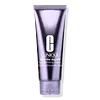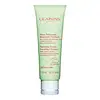What's inside
What's inside
 Key Ingredients
Key Ingredients

No key ingredients
 Benefits
Benefits

 Concerns
Concerns

 Ingredients Side-by-side
Ingredients Side-by-side

Water
Skin ConditioningMyristic Acid
CleansingGlycerin
HumectantSodium Methyl Cocoyl Taurate
CleansingPotassium Hydroxide
BufferingLauric Acid
CleansingBehenic Acid
CleansingPPG-24-Glycereth-24
EmulsifyingSodium Hyaluronate
HumectantSodium Acetylated Hyaluronate
HumectantButylene Glycol
HumectantCaprylyl Glycol
EmollientGlycol Distearate
EmollientPolyquaternium-7
Hexylene Glycol
EmulsifyingTetrasodium EDTA
Phenoxyethanol
PreservativeSodium Benzoate
MaskingCI 60730
Cosmetic ColorantWater, Myristic Acid, Glycerin, Sodium Methyl Cocoyl Taurate, Potassium Hydroxide, Lauric Acid, Behenic Acid, PPG-24-Glycereth-24, Sodium Hyaluronate, Sodium Acetylated Hyaluronate, Butylene Glycol, Caprylyl Glycol, Glycol Distearate, Polyquaternium-7, Hexylene Glycol, Tetrasodium EDTA, Phenoxyethanol, Sodium Benzoate, CI 60730
Water
Skin ConditioningSodium Cocoyl Isethionate
CleansingGlycerin
HumectantSodium Lauroyl Sarcosinate
CleansingSqualane
EmollientPropanediol
SolventGlycol Distearate
EmollientCoconut Acid
CleansingGlyceryl Behenate
EmollientDisodium Cocoyl Glutamate
CleansingC14-22 Alcohols
Emulsion StabilisingPolyacrylate Crosspolymer-6
Emulsion StabilisingSodium Isethionate
CleansingParfum
MaskingMannitol
HumectantButylene Glycol
HumectantSodium Citrate
BufferingSodium Cocoyl Glutamate
CleansingCellulose
AbsorbentChlorphenesin
AntimicrobialCitric Acid
BufferingC12-20 Alkyl Glucoside
EmulsifyingDisodium EDTA
CI 77007
Cosmetic ColorantSodium Salicylate
PreservativeMaltodextrin
AbsorbentMoringa Oleifera Seed Extract
Skin ConditioningSpiraea Ulmaria Extract
AstringentMelissa Officinalis Leaf Extract
Skin ConditioningT-Butyl Alcohol
PerfumingSaponaria Officinalis Leaf Extract
AntimicrobialAcrylates/Ammonium Methacrylate Copolymer
Triethyl Citrate
MaskingGentiana Lutea Extract
EmollientHydroxypropyl Methylcellulose
Emulsion StabilisingSodium Benzoate
MaskingPotassium Sorbate
PreservativeWater, Sodium Cocoyl Isethionate, Glycerin, Sodium Lauroyl Sarcosinate, Squalane, Propanediol, Glycol Distearate, Coconut Acid, Glyceryl Behenate, Disodium Cocoyl Glutamate, C14-22 Alcohols, Polyacrylate Crosspolymer-6, Sodium Isethionate, Parfum, Mannitol, Butylene Glycol, Sodium Citrate, Sodium Cocoyl Glutamate, Cellulose, Chlorphenesin, Citric Acid, C12-20 Alkyl Glucoside, Disodium EDTA, CI 77007, Sodium Salicylate, Maltodextrin, Moringa Oleifera Seed Extract, Spiraea Ulmaria Extract, Melissa Officinalis Leaf Extract, T-Butyl Alcohol, Saponaria Officinalis Leaf Extract, Acrylates/Ammonium Methacrylate Copolymer, Triethyl Citrate, Gentiana Lutea Extract, Hydroxypropyl Methylcellulose, Sodium Benzoate, Potassium Sorbate
 Reviews
Reviews

Ingredients Explained
These ingredients are found in both products.
Ingredients higher up in an ingredient list are typically present in a larger amount.
Butylene Glycol (or BG) is used within cosmetic products for a few different reasons:
Overall, Butylene Glycol is a safe and well-rounded ingredient that works well with other ingredients.
Though this ingredient works well with most skin types, some people with sensitive skin may experience a reaction such as allergic rashes, closed comedones, or itchiness.
Learn more about Butylene GlycolGlycerin is already naturally found in your skin. It helps moisturize and protect your skin.
A study from 2016 found glycerin to be more effective as a humectant than AHAs and hyaluronic acid.
As a humectant, it helps the skin stay hydrated by pulling moisture to your skin. The low molecular weight of glycerin allows it to pull moisture into the deeper layers of your skin.
Hydrated skin improves your skin barrier; Your skin barrier helps protect against irritants and bacteria.
Glycerin has also been found to have antimicrobial and antiviral properties. Due to these properties, glycerin is often used in wound and burn treatments.
In cosmetics, glycerin is usually derived from plants such as soybean or palm. However, it can also be sourced from animals, such as tallow or animal fat.
This ingredient is organic, colorless, odorless, and non-toxic.
Glycerin is the name for this ingredient in American English. British English uses Glycerol/Glycerine.
Learn more about GlycerinGlycol Distearate serves as a pearlizing or opacifying agent in cosmetic products.
It's often included in cleansers and haircare products to give them a lustrous or shimmering appearance.
It is derived from stearic acid, a natural fatty acid commonly found in vegetable oils and animal fats.
Glycol Distearate isn't fungal acne safe.
Learn more about Glycol DistearateSodium Benzoate is a preservative. It's used in both cosmetic and food products to inhibit the growth of mold and bacteria. It is typically produced synthetically.
Both the US FDA and EU Health Committee have approved the use of sodium benzoate. In the US, levels of 0.1% (of the total product) are allowed.
Sodium benzoate works as a preservative by inhibiting the growth of bacteria inside of cells. It prevents the cell from fermenting a type of sugar using an enzyme called phosphofructokinase.
It is the salt of benzoic acid. Foods containing sodium benzoate include soda, salad dressings, condiments, fruit juices, wines, and snack foods.
Studies for using ascorbic acid and sodium benzoate in cosmetics are lacking, especially in skincare routines with multiple steps.
We always recommend speaking with a professional, such as a dermatologist, if you have any concerns.
Learn more about Sodium BenzoateWater. It's the most common cosmetic ingredient of all. You'll usually see it at the top of ingredient lists, meaning that it makes up the largest part of the product.
So why is it so popular? Water most often acts as a solvent - this means that it helps dissolve other ingredients into the formulation.
You'll also recognize water as that liquid we all need to stay alive. If you see this, drink a glass of water. Stay hydrated!
Learn more about Water